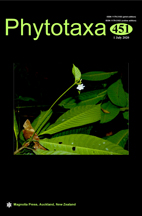Abstract
The monotypic genus Pseudobartsia Hong (1979: 406) is represented by Pseudobartsia glandulosa (Bentham) Yu & Li in Yu et al. (2015: 197) occurring in China and India (Yu et al. 2015, POWO 2020). In China, the species was collected in 1940 from Longtanying, Songming, Yunnan and since then this species was never collected or reported from these localities, hence it is believed to have gone extinct from here (Dong et al. 2013, Yu et al. 2015). In India, this species is known only by the type collection form Shivli, Uttarakhand in the year 1840 by Edgeworth (Khanna et al. 1999). Bentham (1846) described Euphrasia glandulosa based on specimens collected by Edgeworth in 1840 from Shivli, Uttarakhand, India. Later, Hooker (1884) made a combination for Euphrasia glandulosa Bentham (1846: 555) under the genus Phtheirospermum Bunge ex Fischer & Meyer (1835: 35). The genus Pseudobartsia was established by Hong (1979) with one species, Pseudobartsia yunnanensis Hong (1979: 406). Based on the study of the type specimens of Euphrasia glandulosa and Pseudobartsia yunnanensis, Tao (1993, 1996) found that Pseudobartsia yunnanensis cannot be distinguished from Phtheirospermum glandulosum (≡ Euphrasia glandulosa), therefore he treated Pseudobartsia as a synonym of Phtheirospermum and synonymized Pseudobartsia yunnanensis under Phtheirospermum glandulosum. However, recent phylogenetic studies (Dong et al. 2013; McNeal et al. 2013), pollen morphological evidence (Lu et al. 2007) and seed characters (Dong et al. 2013), support Pseudobartsia as distinct and independent genus. Because the name Euphrasia glandulosa as priority over Pseudobartsia yunnanensis, Yu & Li in Yu et al. (2015) made a new combination Pseudobartsia glandulosa to replace the latter in the genus Pseudobartsia.

